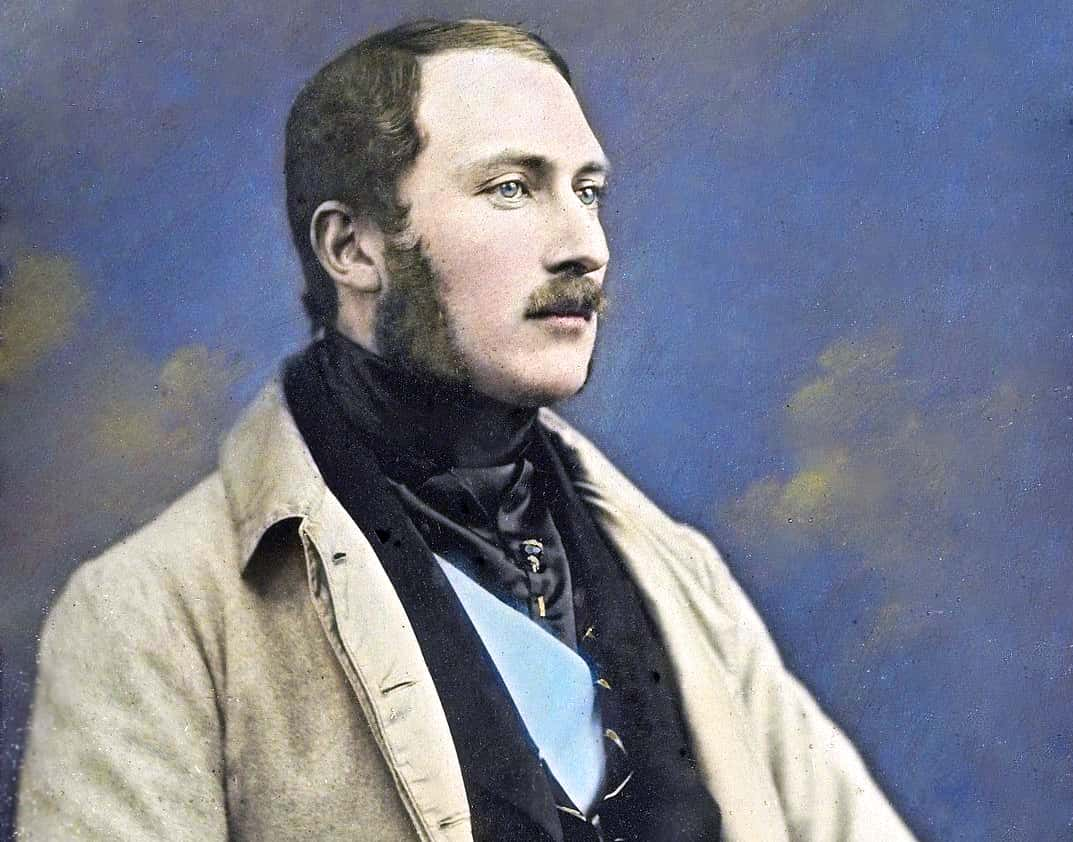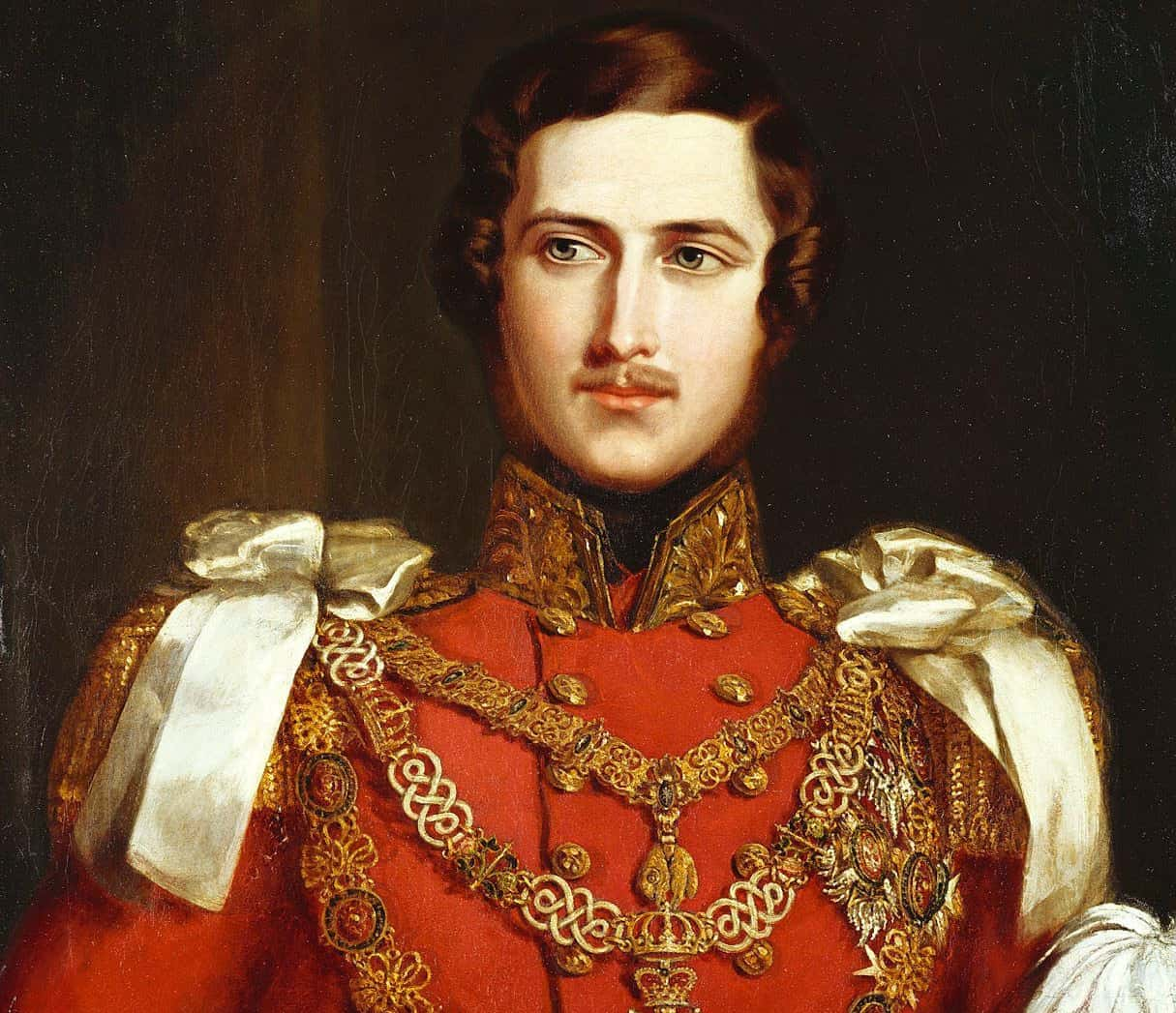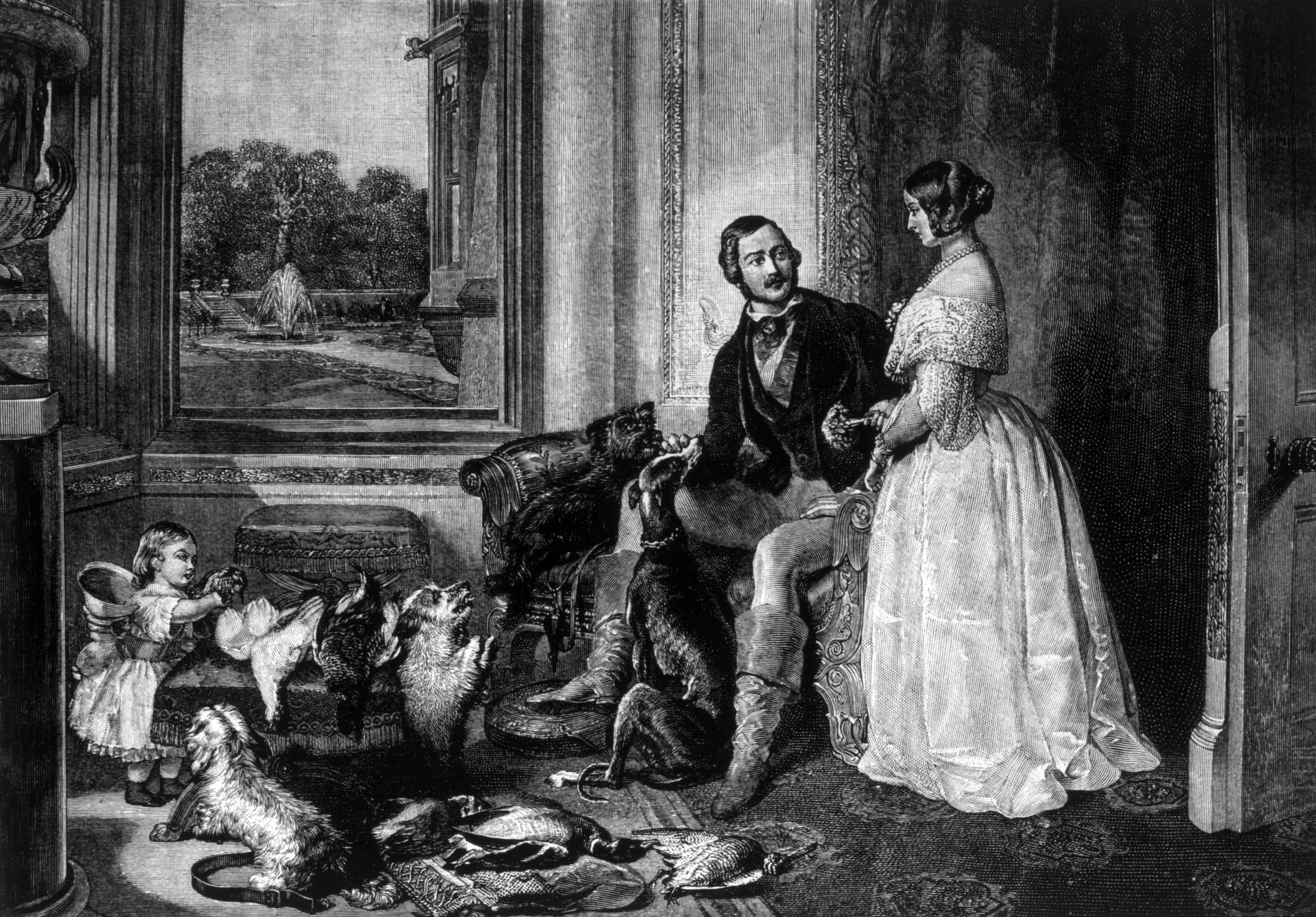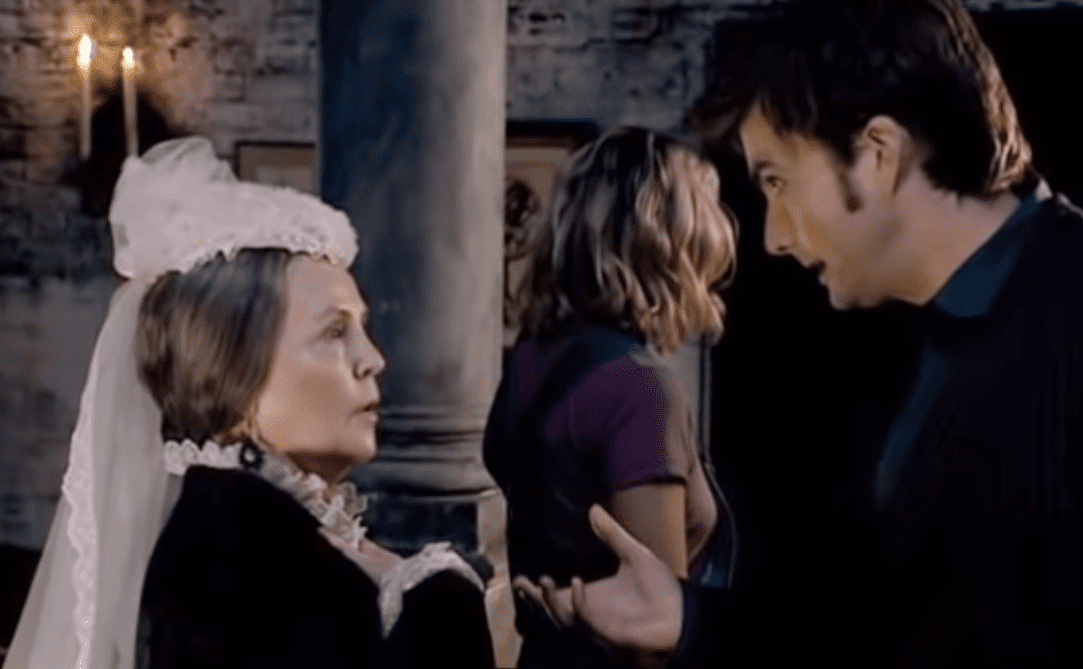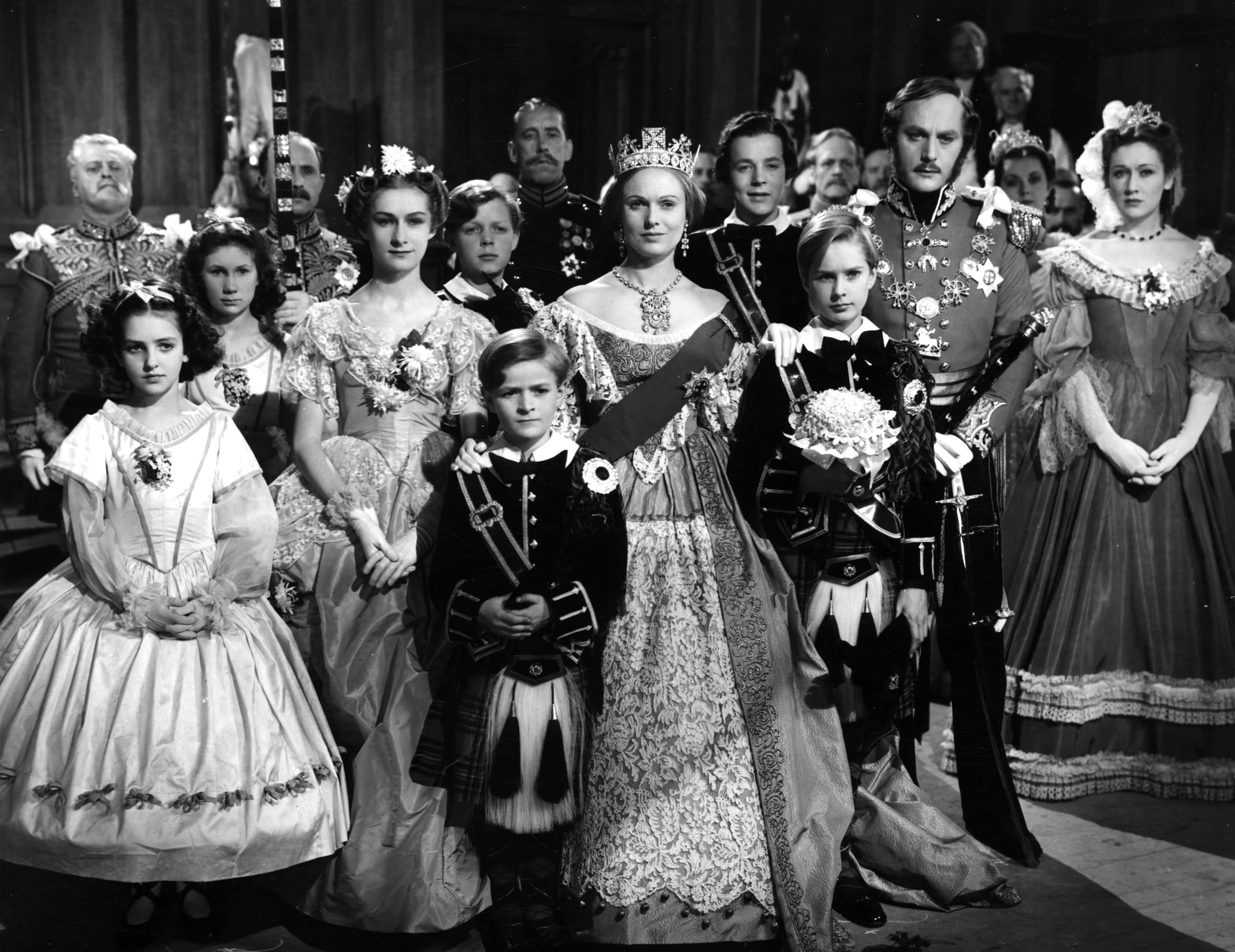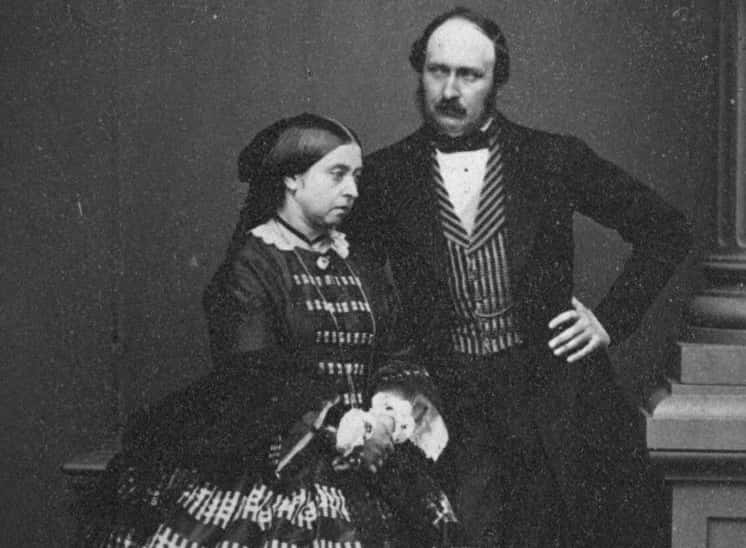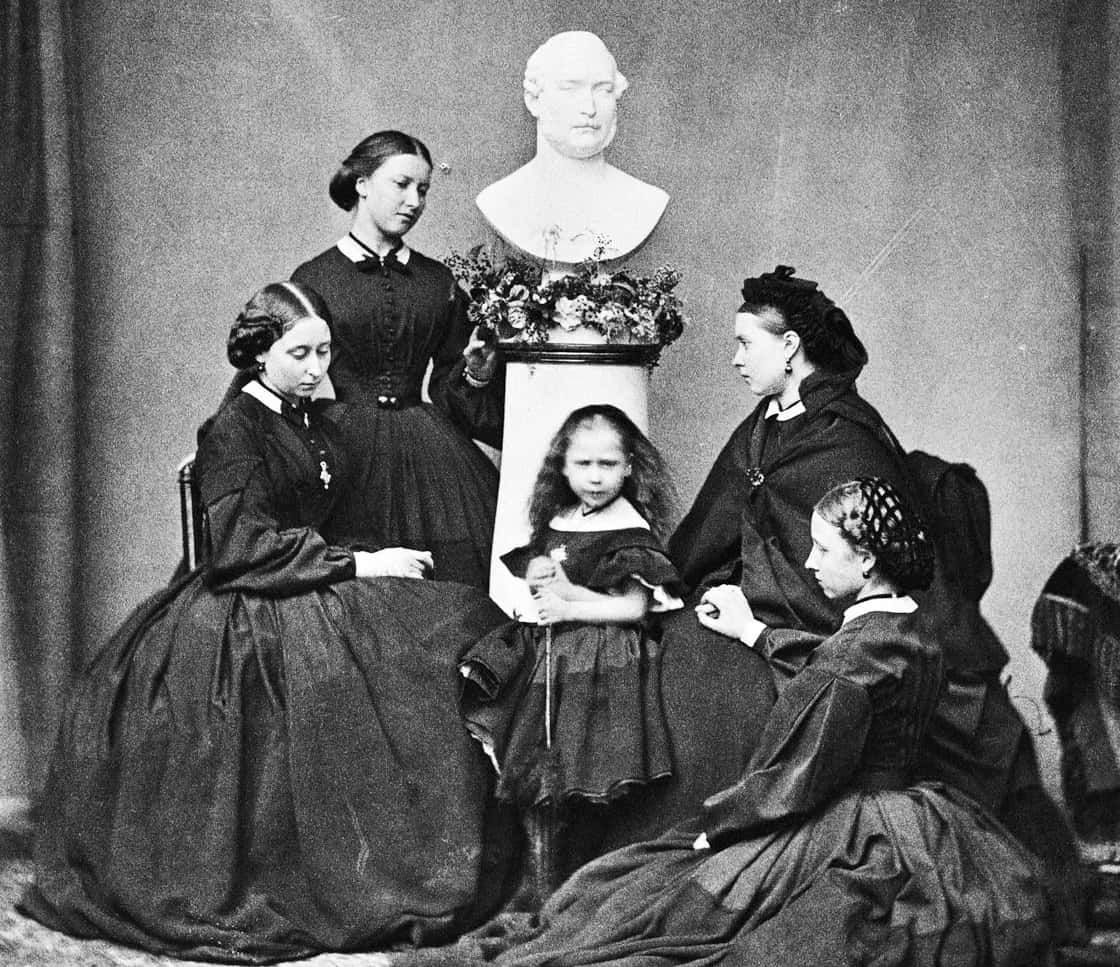Few men in the history of the British Royal Family have ever been remembered as positively as Prince Albert, who was married to Queen Victoria during his life and served as her royal consort. While Victoria’s long reign saw her popularity rise and fall dramatically, Albert’s reputation was far more consistently lauded before and after his passing. You might be wondering why that is, and what Albert did that has kept him in such a lofty position in British history. Here are 42 facts about Prince Albert.
1. Quite the Mouthful
Albert’s full name, in its original German, was Franz Albert August Karl Emmanuel. This has also been translated into English: Francis Albert Augustus Charles Emmanuel.
2. Keeping it in the Family
The original idea for Albert to marry his cousin, Victoria, was first documented in a letter from Albert’s grandmother in 1821. However, the actual meeting of the two cousins was arranged by their mutual uncle. Leopold was the King of the Belgians and he pushed for his sister—Victoria’s mother—to invite Albert over for a visit. He and his family came over to see their relatives in May 1836.
3. Oh No You Don’t!
One person who was opposed to Albert and Victoria marrying was Victoria’s paternal uncle, King William IV of Britain and Ireland. By that time, Victoria was his heir, and William very much preferred a marriage between her and the second son of the Prince of Orange, named Alexander.
4. Welcome to the World
Albert was born on August 26, 1819 just outside of Coburg, Germany. He was the second son of Ernest III, the Duke of Saxe-Coburg-Saalfeld, and Louise of Saxe-Gotha-Altenburg. Oh, those German nobles with their three hyphenated properties!
5. Prestige Galore
It’s safe to say that Albert was born into a world of great privilege. When he was baptized, he had several godparents made up of the European elite. Among them were his grandparents (a countess and a duke, respectively), the Duke of Teschen, and the Emperor of Austria!
6. The Heart Knows What It Wants
Despite her uncle’s opposition to the idea of her marrying Albert, Victoria was immediately won over by him. Even after she’d been shown a near-literal parade of princes, it was Albert who garnered her highest praises. Victoria couldn’t stop praising Albert’s appearance, manners, and disposition when she wrote about him. As for the favored choice of Prince Alexander, Victoria dismissed him as being “very plain.”
7. Too Many Hyphens!!
In 1825, the young Albert’s family experienced a shuffling of noble titles. It was triggered by the death of the Duke of Saxe-Gotha-Altenburg, Albert’s great-uncle. As a result, Albert’s father was thereafter known as the Duke of Saxe-Coburg and Gotha. This was the title which Albert would pass on to his own children.
8. Who Could Disappoint Her?
Although Albert was able to win Victoria over, her uncle William IV was another matter. Luckily, he didn’t have to do much in that regard. After she’d met Albert in 1836, Victoria wrote to her uncle, thanking him profusely for “the prospect of great happiness” which he’d given her in the form of Albert. It’s not known whether the king ground his teeth in frustration at her picking the guy he didn’t want, or whether his heart melted in the face of her joyful discovery of love.
9. Nope, Not True!
One of the most famous stories told about Albert is that he was the man who introduced the Christmas tree to Britain, starting that tradition in the English-speaking world almost single-handedly. Despite the popularity of this idea, it is considered to be indisputably false by historians and scholars.
10. Knowledge is Power
Speaking of the Great Exhibition of 1851, the impact of Albert’s hard work led to what is now nicknamed “Albertopolis.” The London area of South Kensington famously contains many institutions which were built on the surplus created from the Great Exhibition. These include the Science Museum, Royal College of Art, Royal College of Science (though this is now part of Imperial College), the Natural History Museum, and, of course, Royal Albert Hall.
11. Let’s Not Rush It
Although Victoria came to the throne at 18 years of age in 1837, she resisted getting married right away. Even though she’d spoken so highly of Albert and everyone had gotten the hint, no formal engagement had actually been made. This didn’t happen until 1839, when Albert returned to England for another visit.
12. The African Prince Consort
As you can imagine, many places and buildings have been named after Albert since his passing. One of the more unique places is Lake Albert, which is the seventh largest lake in all of Africa. It is located within Uganda and the Democratic Republic of Congo and is one of the African Great Lakes.
13. An International Co-Production
In 2001, the BBC collaborated with A&E to produce and release a television serial titled Victoria & Albert. Victoria Hamilton and Jonathan Firth portrayed the titular couple in this two-part special.
14. Brotherly Love
Throughout his life, Albert was very close with his older brother, Ernest. As boys, they had been raised and educated together as if they were twins—there was only 14 months’ difference between them. While they both endured great misery due to their parents, the brothers’ bond became closer than ever. As the Duke of Saxe-Coburg and Gotha, Ernest remained close with Albert until his death, whereupon he would name one of Albert’s sons as his own heir.
15. Someone Throw the Rice!
Albert and Victoria were married on February 10, 1840, in St. James’s Palace. Shortly before the wedding, an Act of Parliament not only naturalized Albert, but also granted him the title of Royal Highness.
16. Royal Honeymooners
Following their marriage, Albert and Victoria were constantly in each other’s company, utterly devoted to one another—though they kept up a very formal public persona. The first time that Albert was separated from Victoria following his marriage was in 1844, when he traveled back to Coburg upon the news that his father had died.
17. Mic Drop!
When Albert first married Victoria, there was a movement within the British Parliament to restrict Albert’s power due to their dislike and distrust of him. Not only was Albert given a financial annuity almost half as much as what previous consorts had gotten, he was denied a British peerage. Albert took it in stride, however, and merely wrote, “It would almost be a step downwards [to be made a British peer], for as a Duke of Saxony, I feel myself much higher than a Duke of York or Kent.” We wish that he’d been rude enough to say that out loud, just to see all the monocles fly everywhere.
18. Thanks, Hubby!
Queen Victoria appeared as a main character in the 2006 Doctor Who episode “Tooth and Claw.” While Albert does not appear (on account of his having died), he nevertheless plays a crucial role in the episode. Victoria is in mourning for him, even as she discovers that he foresaw the threat of a werewolf cult (roll with it) and prepared the solution to the attack before his death.
19. Sounds Like a Long Internship
Albert was only known as “HRH Prince Albert” for the first 17 years of his marriage to Queen Victoria. It wasn’t until 1857 that he was finally given the title “Prince Consort” by Victoria herself.
20. You Go, Girl!
Interestingly, it wasn’t Albert who proposed marriage to Victoria. She was the one who proposed to him on October 15, 1839 when he returned to visit her in Britain.
21. Trouble in Paradise
One problematic area within the marriage of Albert and Victoria was Baroness Lehzen. Having been the governess to the young Victoria, Lehzen remained a part of the household in a position of high authority. Albert clashed with her (he referred to her as the “House Dragon” in private) and found it a problem that while he was the husband of the house, he wasn’t the master—which was unprecedented in Albert’s time.
22. Let’s Get a New Palace
Balmoral is one of the traditional homes of the Royal Family, but it was Albert who made it so. In 1847, Albert found that the dry and usually sunny climate of the area was beneficial to one of his sons’ frail health. As the owner of Balmoral had died that year, Albert eventually acquired the lease on the property.
23. Bring on the Reform!
Albert took a very active role in establishing the monarchy as a national institution within the UK. He used his position and wealth to support many philanthropic causes, such as raising the legal working age to prevent child labor and updating the educational system to teach natural sciences and modern history to students.
24. I’ll Take Over From Here
Arthur Wellesley, best known as the Duke of Wellington, died in 1852. Several of the offices that the Duke had held at the time of his death were transferred to Albert. These included the colonelcy of the Grenadier Guards and mastership of London’s Trinity House.
25. A Noble Cause
One of the first positions that Albert took when he married Victoria was President of the Society for the Extinction of Slavery. Keep in mind that this was decades before the United States fought the Civil War and before President Abraham Lincoln emancipated American slaves. Not only that, but French colonies were also still using slave labor around this time.
26. Let’s Go to the Ex!
One of Albert’s biggest achievements was the Great Exhibition of 1851. As the President of the Society of Arts, Albert was determined to host a mighty world’s fair which would celebrate the modern industrial technology and its accomplishments. Albert was also aiming to remind the world that the British Empire was its foremost nation. Through his tireless support and promotions, the Great Exhibition was a spectacular success, attended by such legendary figures as Charles Darwin, Alfred Tennyson, Lewis Carrol, Charles Dickens, Samuel Colt, and Charlotte Bronte. Moreover, the Great Exhibition led to a series of worlds fairs being held throughout the 19th century, which only added to Albert’s contribution to history.
27. Let’s Try not to be Too Hypocritical, Lads
Incredibly, despite the risk that the Revolutions of 1848 brought towards himself and his family, Albert maintained a cautious support for the betterment of the poor classes. He publicly continued to voice support for philanthropic action to provide assistance to the hardest-working yet poorest part of the population. This ethical resolve won Albert a lot of public support, which might go in some way to explain why there wasn’t more of a revolution against the Royal Family.
28. So Gallant!
Albert is portrayed by Rupert Friend in the 2009 film The Young Victoria. As with other interpretations, Albert is depicted in a very romantic and idealized light. The movie even falsely claims that he took a bullet meant for Victoria during one of the times someone tried to assassinate her.
 Getty Images
Getty Images
29. Impressive Family Tree
Albert’s descendants continue to populate the royalty of Europe. Amongst Albert’s grandchildren alone were four reigning monarchs of Europe and five consorts to other monarchs!
30. Stay Neutral
Albert was the first person in the royal family to maintain the belief that the monarchs of the UK should rise above any political support, as it would alienate a portion of their subjects. Victoria didn’t accept this line of thinking, but members of the royal family after her would eventually adopt Albert’s line of thinking.
31. Involved Dad
Aside from his incredibly demanding public life, Albert remained a devoted father to the nine children he had with Victoria. Rare for the time, all nine of their children survived to adulthood, with historians crediting Albert for his reforms of child-rearing within his household. Albert was also very active as a father, participating in games with his children, and personally disciplining them if they misbehaved. Despite Albert’s use of corporal punishment against his sons (especially his eldest), there is no evidence that Albert had anything other than a chiefly positive relationship with his kids.
32. Life Flashing Before Your Eyes
Albert nearly lost his life in a terrible accident during the fall of 1860. He was visiting his old home in Coburg when the four horses pulling his carriage suddenly bolted, leading him directly to a railway crossing where a station wagon stood. Albert threw himself from the carriage, jumping to safety just in time. Though one of the horses was killed in the ensuing collision, Albert was able to walk away with just some cuts and bruises. However, the incident took a heavy emotional toll on him.
33. Oh, Canada!
In 1848, Albert’s daughter Louise Caroline Alberta was born. Years later, she would marry the Marquess of Lorne, who served as the Governor General of Canada from 1878 to 1883. Not only is the Canadian province of Alberta named after Albert’s daughter, but so is that province’s most famous lake, Lake Louise.
34. Maple Leaf Forever
Speaking of Canada, Albert has a few things named directly after him lying around in that Commonwealth country. Prince Albert is the third-biggest city in the province of Saskatchewan, while Albert County can be found in New Brunswick. If you find yourself in Ottawa, the capital city of Canada, you can also find Albert Street as another example of the royal’s Canadian legacy.
35. On with the Show
In 2016, Daisy Goodwin created and wrote the ITV series Victoria, starring Jenna Coleman as the titular queen and Tom Hughes as her husband, Albert. The series has been highly positively reviewed, airing its third series in early 2019. Due to the popularity of the show, it is expected to run for six seasons.
36. Someone Call a Therapist!
When he and his brother, Ernest, were children, Albert endured a very tempestuous relationship between his parents. Not only did Albert’s mother separate and divorce from his father, but she was also exiled from court in 1824. After she married her lover, Albert’s mother never saw her sons again before dying from cancer at the tragically young age of 30 in 1831. As for Albert’s father, he remarried to his own niece. Albert had a very minimal and presumably awkward relationship with his cousin/stepmother.
37. Boo! Boo!
Far from the romantic and tragic figure that he would later become in British history, Albert was initially viewed very negatively when he first married Victoria. His position met criticism on nearly all fronts; he was from an impoverished state, he was a Lutheran (which clashed with the Anglican religion), he was German (the British disliked that very early on), and worst of all, some of his family members were Roman Catholics.
38. The People’s Spring
In 1848, a series of bourgeois revolutions swept over Europe, removing old systems of authority, diminishing class differences, and sometimes removing the royal family from power completely. While the rate of success of these revolutions are debatable, the Revolutions of 1848 are still the most widespread case of revolution in European history.
Naturally, Albert had a lot of stake in this situation, as many of the deposed aristocrats or rulers were directly related to him. He and Victoria never experienced a serious revolution against them in England, but a series of individual demonstrations led them to withdraw from London for a time out of concern for their own safety.
39. Get Your Act Together!
Albert was still feeling ill in Windsor when he heard that his son, the Prince of Wales, was having a very public affair with an actress named Nellie Clifden. Worried about pregnancy or scandal, Albert made the arduous journey to Cambridge, where his son was studying. Despite the growing pain in his back and legs, Albert took the time to admonish his son—though it would do little good, given the later adventures of Edward VII.
40. What Killed the Prince?
Albert died on December 14, 1861 at the age of 42 years old, surrounded by his wife and five of his children. Initially, Albert was diagnosed as having typhoid fever, but this has been called into question by modern medical historians. Based on the stomach pains that Albert was said to have suffered for the last two years of his life, many have hypothesized that he actually suffered from Crohn’s disease. Since this disease wasn’t named and recognized until the 1930s, Albert’s physicians would never have considered it a possibility.
41. Bitter Widow
Albert’s eldest son Edward, whose playboy behavior had caused Albert and Victoria so much headache, was not present when his father died. While Victoria had always disliked Edward for his temperament and attitude, the death of Albert so soon after visiting Edward was too much for her. She spent the rest of her life blaming Edward for Albert’s premature death, as he might have benefited from staying home during his illness.
42. Grief Counsellor Needed
Albert’s death sent Victoria into a deep depression from which she never fully recovered. In all the houses that Victoria and Albert had lived in, Albert’s personal rooms were untouched, kept as they were and even supplied with fresh towels and hot water. Victoria would wear black for the rest of her life and withdrew from public life, which ironically undid some of the goodwill that Albert had built up during his lifetime by being so publicly active in British life.

